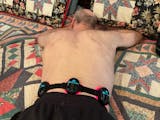Improving Chronic Wound Healing with LED Phototherapy
The healthcare industry faces significant obstacles when it comes to managing chronic wounds, especially in diabetic patients. These wounds often do not respond well to standard treatment methods, which has led researchers to explore alternative approaches. One such method is phototherapy, which utilizes low-level light therapy (LLLT) to address this challenging problem. A recent study conducted at the University Medical Center Ljubljana focused on investigating the effectiveness of using light-emitting diodes (LEDs) in phototherapy to treat chronic wounds in both diabetic and non-diabetic patients. This research aims to find innovative solutions for improving the outcomes of wound treatment and ultimately enhancing healthcare for those affected.
From October 2012 to June 2014, a comprehensive study was conducted involving 79 patients who suffered from chronic wounds in their lower limbs. Among these patients, there were 40 individuals without diabetes and 39 individuals with diabetes. To ensure unbiased results, the patients were randomly divided into two groups: a treated group and a control group. The treated group underwent phototherapy with LED, receiving a dosage of 2.4 J/cm2. This therapy utilized specific wavelengths of 625, 660, and 850 nm, and was administered three times a week for a duration of 8 weeks. On the other hand, the control group received phototherapy with broadband light, which encompassed wavelengths ranging from 580 to 900 nm, and had a power density of 0.72 J/cm2. To evaluate the impact of these treatments on wound healing, laser Doppler measurements were utilized to assess microcirculation, a critical factor in the healing process.
The findings indicated a noteworthy rise in blood circulation at the site of the wound for both diabetic and non-diabetic individuals in the group that received LED Phototherapy (p = 0.040 and p = 0.033, respectively). Conversely, there was no significant disparity observed in the control groups. Additionally, the assessment of the Falanga wound bed score exhibited a substantial enhancement in both treated groups when compared to the control group.
The results of this study highlight the effectiveness of LED phototherapy as an extra method of treatment for chronic wounds in patients with and without diabetes. LED phototherapy has the potential to improve wound healing outcomes by improving blood circulation and facilitating tissue repair, making it a promising approach in wound care.
To summarize, incorporating LED phototherapy into the treatment of chronic wounds is a beneficial supplementary method that provides a non-intrusive and efficient way to expedite the healing process. However, additional research and clinical trials are necessary to determine the most effective treatment parameters and protocols for maximizing the advantages of LED phototherapy in the care of chronic wounds.
















Share:
Harnessing the Healing Power of Red Light: A Breakthrough in Postoperative Recovery for Breast Augmentation Surgery
Enhancing Fat Metabolism: The Intersection of Exercise and Low-Level Laser Therapy